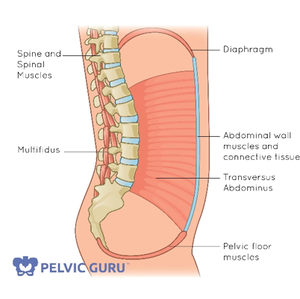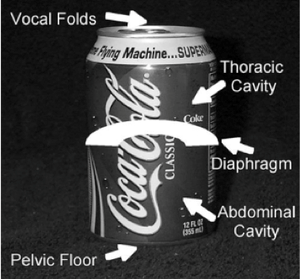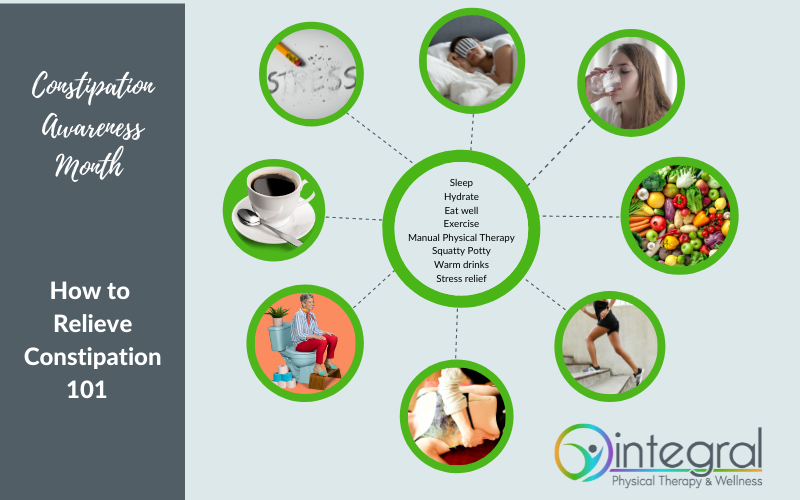Did you know that how you breathe can profoundly impact your health? With the billions spent on health supplements every year, it’s incredible to think that something as simple as changing how we breathe might be a part of your health solution. I spend a lot of time talking to my patients about breathing, often whether they present with a specific breathing issue or not. Breath work is used in many professions, including PT, counseling, yoga, and more. PTs in general are experts on the musculoskeletal system including the ribcage and diaphragm. In addition, I am trained in the treatment of breathing disorders by the leading expert in this area, Dr. Mary Massery, a physical therapist specializing in breathing disorders and postural control. Breathing well impacts so many body systems and can be a really powerful tool in your wellness journey.
Did you know that how you breathe affects all of these things?
- Posture
- Strength and power
- Overall health and wellness
- Stress level
- Colon function
- Pelvic floor muscle function
- Speech and communication
- pH, inflammation
What are some problems you might have if you are not using good strategies to breathe?
- Headaches
- Neck pain
- Jaw pain
- Shoulder pain
- Back pain
- Pelvic floor dysfunction
- Constipation
- Reflux
- Tense, hoarse, or quiet speech
- Lack of strength or power for a task
- Sympathetic overdrive
- Inflammation
There is no need to worry. We all breathe, all day every day! As Dr. Massery, says: “breathing wins, every time.” Our breathing strategies have a heavy influence on our posture and movement, which in turn can also impact our breath. The good news is, in the course of healing, even small changes can make a big difference!
Have you ever paid attention to how you breathe?
The way we breathe is fascinating. It can be conscious or unconscious, which makes it unique. We don’t have to think about it, and we will continue breathing. We can choose to think about it and change our breathing strategy, or our respiratory rate.
The three main types of breathing are chest breathing, belly breathing and diaphragmatic breathing. Diaphragmatic breathing is more currently described as umbrella breathing because the lower ribs move up and out as the abdomen moves out, resembling the opening and closing of an umbrella. In the past, diaphragmatic breath was taught as overexaggerated belly breathing without ribcage movement, which should be avoided. The diaphragm is a very cool muscle, arguably one of the most important muscles in the body. I was so blown away by my first Massery lecture on breathing in 1999 that I knew it would impact every PT session I provided from that day forward.
What is the diaphragm?
The diaphragm is a huge muscle that divides the upper and lower body, sitting in the middle of the trunk, attaching to the spine and lower ribs. It also attaches to the fascia and muscles of the other core muscles.

Other cool facts about the diaphragm:
(aka why diaphragmatic breathing is important)
- The esophagus passes through the diaphragm, which is why breathing and reflux are connected.
- The vena cava also passes through the diaphragm, and it plays a role in venous return.
- There are 2 halves, each with its own nerve supply
- It massages the colon as it contracts and relaxes, stimulating bowel flow
- It is the roof of our deep inner core! It works in a coordinated fashion with the deep abdominals, deep back muscles, and pelvic floor, the fabulous four of the deep inner core.
- It mobilizes the spine and ribs as it contracts and relaxes
- Diaphragmatic breathing is more associated with the parasympathetic (rest and digest) part of our nervous system while chest breathing is more associated with the sympathetic (fight or flight) part of our nervous system.
- The diaphragm can become weak with lack of use, or tight, just like any other muscle. Conversely, it can be stretched and strengthened with the right exercises.
- Learning to use it more may involve more concentration at first but use can become automatic with practice.
- Diaphragmatic breathing can reduce pain, through its calming effect and stimulation of muscle relaxation.
Studies show that patients with low back pain do not use their diaphragm well. Other studies demonstrate that patients who do diaphragm training improve their low back pain. There is also a lot of research that shows that diaphragm training should be included in rehab of the pelvic floor, and vice versa.
There is a tremendous amount of research that has been done on the relationship between breath, postural control, and movement. There are differences in how we each breathe, and there is a huge variability in what is considered normal. The way we breathe is highly influenced by our experience and our anatomy. For example, a gymnast or dancer is not going to show a lot of abdominal movement and will be mostly a chest breather, whereas a vocalist is going to use a lot of diaphragm support. It is actually best to be able to use a combination of your abdomen, diaphragm and your chest well. What if you were a dancer 20 years ago? Yes, you are probably still a chest breather. Should you learn to use your diaphragm more? Probably! There are some ideals for all of us.
Bad breath…
Okay, no breathing is bad. But the way we breathe can help or hinder our function. For a quick example of this, try standing up in front of a chair, then sigh and let all of your air out as you sit down. Now stand up again, take a nice deep breath in, and exhale slowly as you sit down. Which time was easier? Have you ever tried lifting something heavy while inhaling versus while exhaling? Are you starting to see how breath support for movement is everything?
When pressure is good…

Our bodies are pressure systems. When we regulate the pressure well with air support, we function better. Dr. Massery developed the soda pop model of postural control, which is a great way to describe pressure regulation in the human body. First, imagine that the can is closed and remember how firm a closed can is. Then, imagine popping the top and remember how quickly the can collapses when squeezed. This analogy can help you understand how the core really extends above the diaphragm to the vocal folds at the top and down to the pelvic floor below. Problems anywhere in this system can be closely connected to each other. Knowing how these muscles work together will help your whole body function better.
Here’s a great video by my colleague Julie Wiebe, PT. She uses a balloon to demonstrate the important role of the diaphragm and other core muscles in controlling pressure in our trunk.
What are some bad habits you might find with your breathing strategies?
- Holding your breath: There are a few times this is appropriate, such as lifting a really heavyweight that requires a high level of pressure support or reaching something very high that requires maximum stability. Sometimes we hold our breath for movement more often than we realize. Breath-holding, when it is not necessary, can affect the function of the canister, and this can be problematic when dealing with issues such as urinary leakage or low back pain.
- Chest breathing: You might be using this strategy too much if your upper chest moves up or out a lot while you are breathing, and your abdomen and lower ribs don’t tend to move at all. This pattern can cause overuse of the accessory respiratory muscles located in the neck and shoulders. These muscles are better off staying relaxed while we breathe. If they are overworked, they can become sore and develop trigger points, which can cause neck pain and headaches.
- Belly breathing: If you exaggerate your belly breath, which occurs sometimes in vocalists, instrumentalists, and yogis, you might be creating too much downward pressure on your pelvic floor, and you might also be lacking rib mobility and chest breath that will allow mobility through your upper body.
- Breathing too quickly: In our fast-paced society, many of us over breathe and have a high resting respiratory rate. Rapid breathing can actually change the pH in our bodies to make us more acidic. An acidic pH is associated with a pro-inflammatory state. Additionally, increased breath rate activates the fight or flight part of the nervous system. This might be helpful if you have 15 minutes to clean your home before company arrives but doesn’t help if you are tired, stressed, or struggling with anxiety.
Best breath…
Remember, breathing is a powerful thing. We know through our clinical experience and medical research that breathing better can help with the healing process for a variety of ailments. Practicing breathing both at rest and while doing activities or exercises that we want to improve will optimize the system. To start, practice some umbrella breaths (ideally while lying down). This can help stimulate your parasympathetic nervous system and help you feel relaxed and calm. There are a variety of breathing apps that can be quite helpful, my favorite is the Breathe app on my Apple watch. There’s also a great app for the iPhone or Android phone called The Breathing App, which allows customization. Try choosing a 4:6 inhalation to exhalation ration for better parasympathetic stimulation (I prefer this to Box breathing which does not have a long enough exhalation period).
If you really want to work on what breath (or combinations of different breaths) is best for you, we recommend having this assessed by a physical therapist. Incorporating a variety of breathing strategies will help you succeed wherever life is taking you.
THE SCIENCE ON BREATHING
Chronic Low Back Pain and Diaphragm Function
Breathing and Functional Movement
Multi-Functional Role of the Diaphragm
Breathing Training Improves Low Back Pain
Breathing Training Improves Strength, Function, and Quality of Life in Children with Cerebral Palsy





